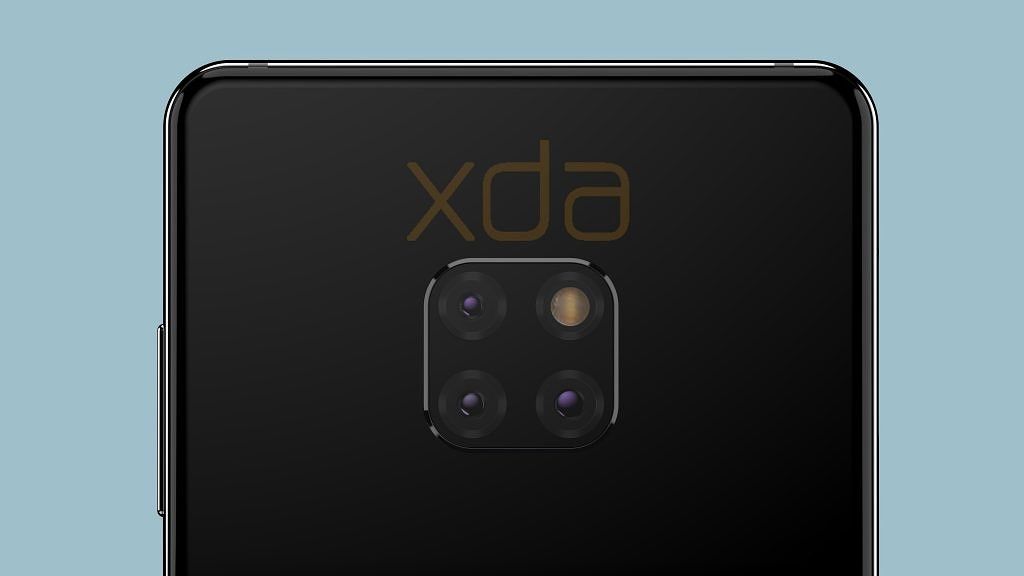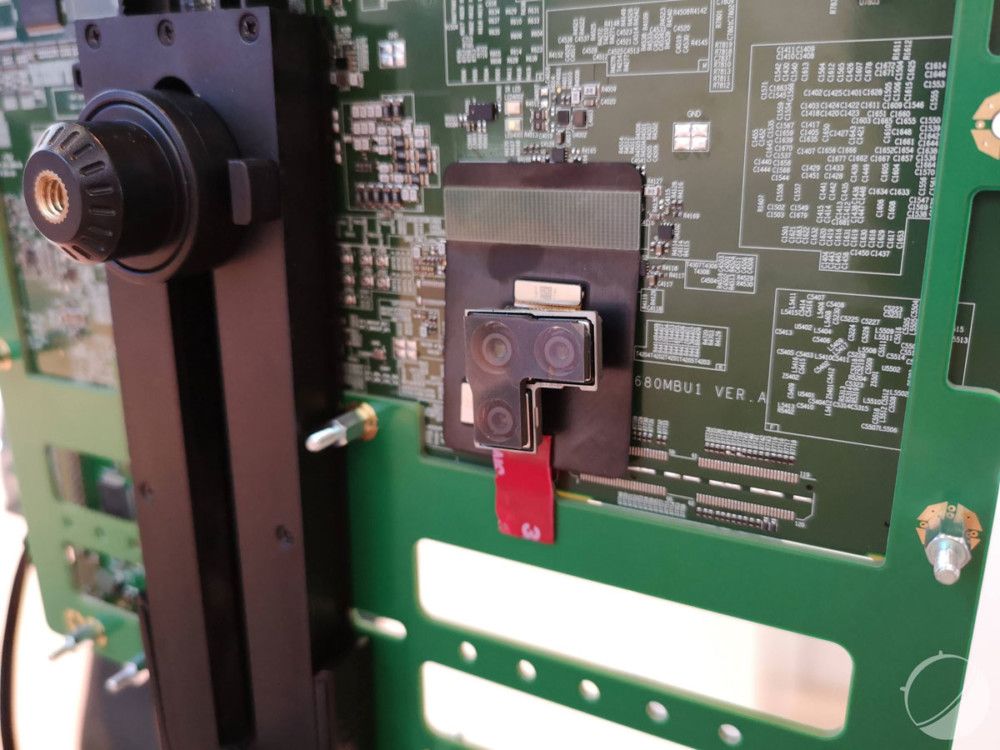
Although they’re present at this year’s IFA in Berlin, Chinese technology giant Huawei doesn’t have a new flagship smartphone to announce. Instead, they’re announcing the HiSilicon Kirin 980 system-on-chip—their latest chipset that will power future Huawei and Honor flagship smartphones like the Honor Magic 2, Huawei Mate 20, and Huawei Mate 20 Pro. Huawei’s Kirin 980 is the first at a lot of things: It’s the first commercially available chipset to be manufactured on TSMC’s 7nm process, the first to embed ARM’s Cortex-A76 CPU cores, the first to feature dual NPUs, and the first to support Cat. 21 LTE. Let’s break down each aspect of this new chipset to better understand the latest offering from HiSilicon.
HiSilicon Kirin 980 Manufacturing Process
The HiSilicon Kirin 980 is said to be the first commercial 7nm SoC. What that means is it’ll be the first commercially available chipset manufactured on TSMC’s 7nm manufacturing process. According to Huawei, the Kirin 980 packs 6.9 billion transistors within a 1 sq. cm die size—an increase of 1.6 times compared to the 10nm manufacturing process used on the Kirin 970. Huawei states that the new 7nm process delivers a 20% increase in SoC performance and 40% increase in power efficiency.
TSMC is also reportedly manufacturing the next flagship Qualcomm Snapdragon chipset using a 7nm manufacturing process. Although Qualcomm has confirmed that they are sampling their upcoming 7nm Snapdragon chipset, the company has not confirmed whether this chipset will be called the Snapdragon 855 or the Snapdragon 8150. In any case, it’ll be interesting to see how the next Qualcomm Snapdragon chipset compares to the HiSilicon Kirin 980. The Kirin 980 will first appear on either the Honor Magic 2 or Huawei Mate 20/Mate 20 Pro, while we don’t have any information about which device will be the first to feature Qualcomm’s next chipset. (The Lenovo VP, in a now deleted post, promised the world’s first 5G smartphone with the “Snapdragon 855,” though we have to take the company’s teasers with a grain of salt given what happened with the Lenovo Z5.)
HiSilicon Kirin 980 CPU/GPU/ISP
CPU
The Kirin 980 will feature a total of 8 CPU cores in the following configuration: 2 ARM Cortex-A76 high-performance cores, 2 ARM Cortex-A76 high-efficiency cores, and 4 Cortex-A55 extreme-efficiency cores. Huawei states that the Cortex-A76 cores are 75% more powerful and 58% more power-efficient compared to Cortex-A75 cores. Huawei is also introducing a CPU subsystem with “Flex-Scheduling” technology to allocate the “right cores to the right tasks.”
The Kirin 980 is the first SoC to feature ARM’s Cortex-A76 cores. We explored ARM’s new CPU cores back in May, but in summary, the Cortex-A76 brings “laptop-class performance” to mobile devices. Like the Cortex-A75 cores, the Cortex-A76 uses ARM’s DynamIQ technology. The Cortex-A76 brings 25% more integer instructions per clock, 90% higher bandwidth, 35% better floating point performance, and 4x compute performance improvements for machine learning applications. ARM projected the A76 to ship in a 3GHz configuration on TSMC’s 7nm, but it’s unclear if the 2x2x4 setup in the Kirin 980 will run the 4 Cortex-A76 at full power.

GPU
The Mali GPUs included in older Kirin SoCs have historically fallen behind Qualcomm’s Adreno GPUs in terms of performance, but that has changed in recent years with the introduction of ARM’s Bifrost GPU architecture. The Mali-G71, the GPU found in the Huawei Mate 9‘s HiSilicon Kirin 960, performed adequately in our early testing. The Mali-G71, however, demonstrated poor power efficiency while its successor, the Mali-G72, was still unable to compete head-to-head against the high-end Adreno’s sustained performance and power efficiency. The Mali-G76, however, promises 30% more power efficiency, 30% higher performance density, and 2.7x improvements in machine learning applications over the previous generation.
Huawei claims that the Mali-G76 integrated into the Kirin 980 offers 46% greater graphical processing power and 178% improved power efficiency. The company also claims that the gaming performance is overall 22% better than the competition, which we assume refers to the Adreno 630 in the Qualcomm Snapdragon 845 SoC. It’s unclear how Huawei’s GPU Turbo technology will factor into these numbers, however. Huawei has clearly been pushing gaming performance as a major selling point in recent memory, so we’ll have to see just how well the first Kirin 980 devices fare in our testing. We certainly hope that the Honor Magic 2 and Huawei Mate 20/Mate 20 Pro do better than the Honor 10 did in our Fortnite Mobile tests.

ISP
We were offered few details on the new Image Signal Processor (ISP) in the Kirin 980. We are told to expect the following improvements over the previous generation: 46% speed improvement in camera processing, 23% power efficiency improvement in recording, 33% improvement in latency, and better contrast and white balance when compared to competitors.
HiSilicon Kirin 980 Dual NPU
The HiSilicon Kirin 970 was the first chipset with a dedicated Neural Processing Unit (NPU). Although artificial intelligence has become somewhat of a buzzword thanks to (in our view) aggressive marketing, there are some practical benefits when it comes to photography. Many smartphones these days have some form of intelligent scene detection in their cameras—that’s just one example of an application that NPUs can be used for. Google’s ML Kit API in Firebase opens up more possibilities for features enhanced with machine learning, and thanks to the dedicated NPU in the Kirin 970, apps can offer better performance if they use ML Kit’s on-device APIs.
The HiSilicon Kirin 980 takes things a step further with a Dual NPU. The Kirin 980 can recognize “up to 4,500 images per minute,” an improvement of 120% when compared to the NPU’s performance in the Kirin 970. The Kirin 980 supports common ML frameworks like Caffe, TensorFlow, and TensorFlow Lite. We aren’t sure what EMUI features will take advantage of the Kirin 980’s Dual NPU, but we’ll learn more information once the Honor Magic 2 or Huawei Mate 20/Mate 20 Pro smartphones are announced. We were told that object recognition now supports video and that real-time object segmentation is more precise, however. Companies love to boast about their AI features, but outside of niche applications like face filters or Microsoft’s offline translations, the improvements offered by the Dual NPU will make little difference to the average consumer.
HiSilicon Kirin 980 Modem
The Kirin 980 is the first chipset with a modem that supports Cat. 21 LTE. That means it supports a peak theoretical download speed of 1.4Gbps. That sounds nice on paper, but in reality, you’re not going to get anywhere near those peak speeds. The OnePlus 6, for instance, supports Cat. 16 LTE for Gigabit download speeds, but you would be hard pressed to actually find an area where you’ll achieve those kinds of speeds. That doesn’t mean the improvements in the Kirin 980’s modem won’t be beneficial, however, because the other network improvements such as 4×4 MIMO, 256-QAM, and 3CC carrier aggregation will still improve help network connectivity. We’re still years away before most carriers around the world upgrade their infrastructure to support the new 5G standards, so the improvements we’re seeing today are stepping-stones for what we’ll be seeing in the future.
Other details we were briefed on include the fact that the Hi1103 modem allows for 1,732 Mbps Wi-Fi speeds, and the chipset has dual-frequency GPS (L1 and L5 bands) for precise positioning.
Kirin 980 – Available on the Huawei Mate 20
Honor stole some of Huawei’s thunder on stage the other day by announcing that the Honor Magic 2 will feature the HiSilicon Kirin 980. We don’t know when the Honor Magic 2 will launch, but the Kirin 980 will appear in the Huawei Mate 20 during the phone’s October launch. We’ve previously leaked the specifications as well as the first render for the Huawei Mate 20, so we’re not at all surprised to see that the upcoming Huawei flagship will launch with the latest HiSilicon chipset. Interestingly, the fact that the Huawei Mate 20 and Mate 20 Pro will very likely be the first smartphones with the Kirin 980 means that we can expect the Honor Magic 2 to launch sometime after the Mate 20 series.

Render of the Huawei Mate 20 with a waterdrop notch. To see more, check out our exclusive leak of the Mate 20 design.

 2 month waiting period some users are seeing. This particular user owns the Redmi Note 5 (vince).
2 month waiting period some users are seeing. This particular user owns the Redmi Note 5 (vince).












































